Welcome to a comprehensive tactical analysis of Atletico Madrid under the guidance of their esteemed manager, Diego Simeone. In this examination, we delve into the strategic intricacies that define Simeone’s tenure at the club, dissecting the formations, player roles, and tactical principles that have cemented Atletico Madrid’s status as a formidable force in European football. Simeone’s tactical philosophy, characterized by defensive solidity, disciplined organization, and incisive counterattacks, has been instrumental in shaping the identity of Atletico Madrid. Join us as we unravel the tactical nuances behind Diego Simeone’s successful reign at the club, providing insights into the strategies that have propelled Atletico Madrid to domestic and continental glory.
Build-up
In the build-up, Diego Simeone sets his team up in a 1-3-2-5 formation, with a back-three, a box midfield in the middle, and three up front.
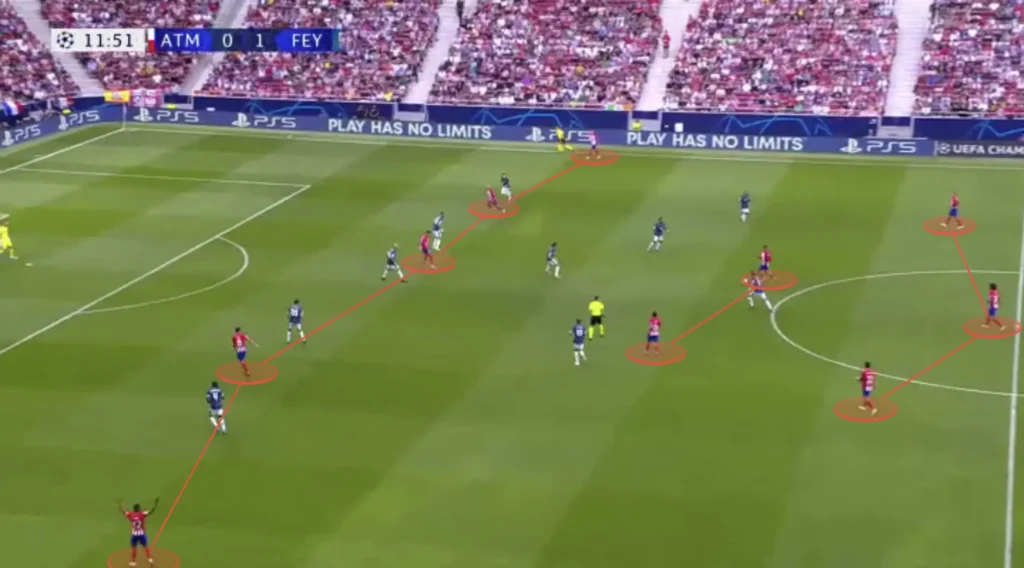
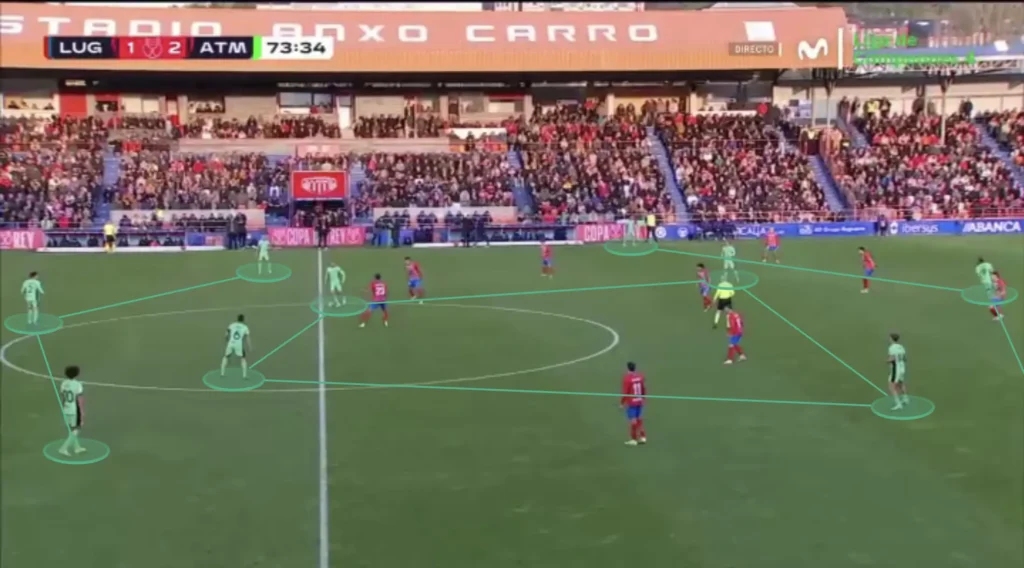
Having four central midfielders creates more options in the center and less space between the players. Simeone likes this because he prioritizes playing through the middle. He needs one player high and wide to pull apart the backline while the rest create numerical advantages in the midfield areas. This builds good conditions in defensive transitions, allowing more players to press when they lose the ball. Another purpose for keeping many players in the middle is to shorten the distance between them. This shortens the length of the passes, which naturally shortens the time between passes. This means the opposition players will have less time to push up and press, giving the Atletico players more time and control.
Changing Formation
Atletico Madrid, however, often rotates in their build-up, creating new formations to confuse opponents. They also adapt to their opponent’s formation to create numerical advantages in different areas, allowing them to beat the defense and score more goals. Their most frequent formation change is to push one of the holding midfielders into the attacking midfield, creating a 1-3-1-5-1 formation. Their principles and general guidelines stay the same when they do this.
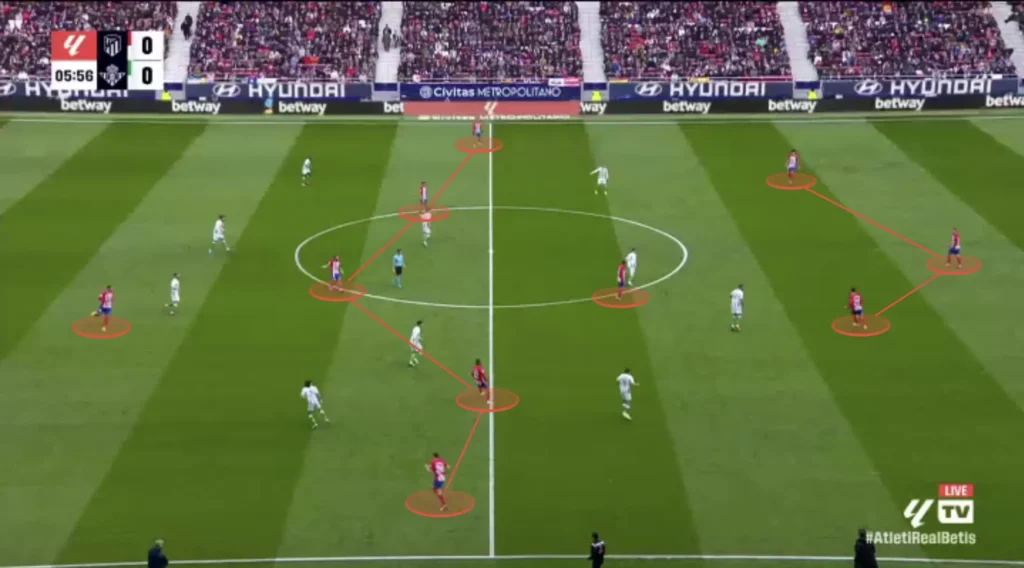
Balls in Behind
Unlike many other successful teams, Atletico Madrid is rarely the team in possession, and they are confident enough in their defense to let the other team have the ball. They, therefore, do not shy away from using the early through-ball in behind the opposition’s backline. This constant threat prevents the opposition from playing with a high backline and closing the space between the lines. Instead, they have to drop the backline and protect the space in behind, opening the space in the middle for the Atletico midfielders to exploit.
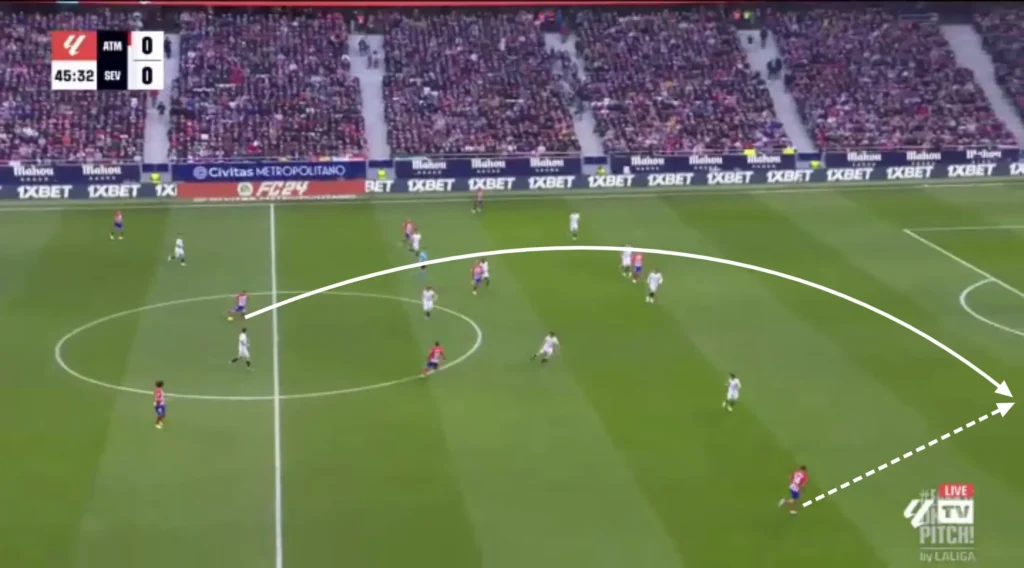
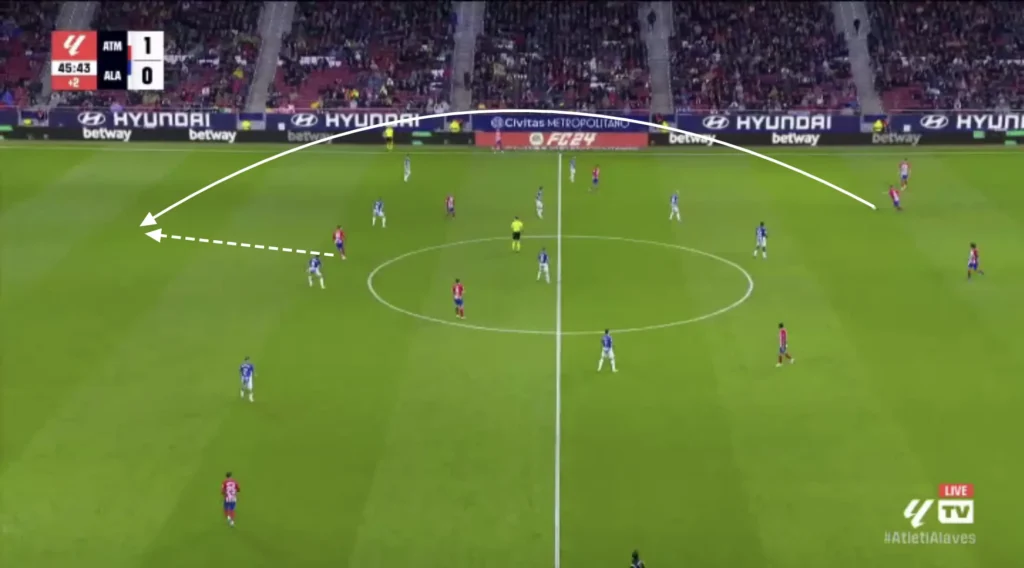
Numerical Advantages
Another massive aspect of Atletico Madrid’s high build-up is their ability to create numerical advantages against the opposition’s defensive line. Their front five naturally becomes numerically superior against a back four, which they are great at taking advantage of.
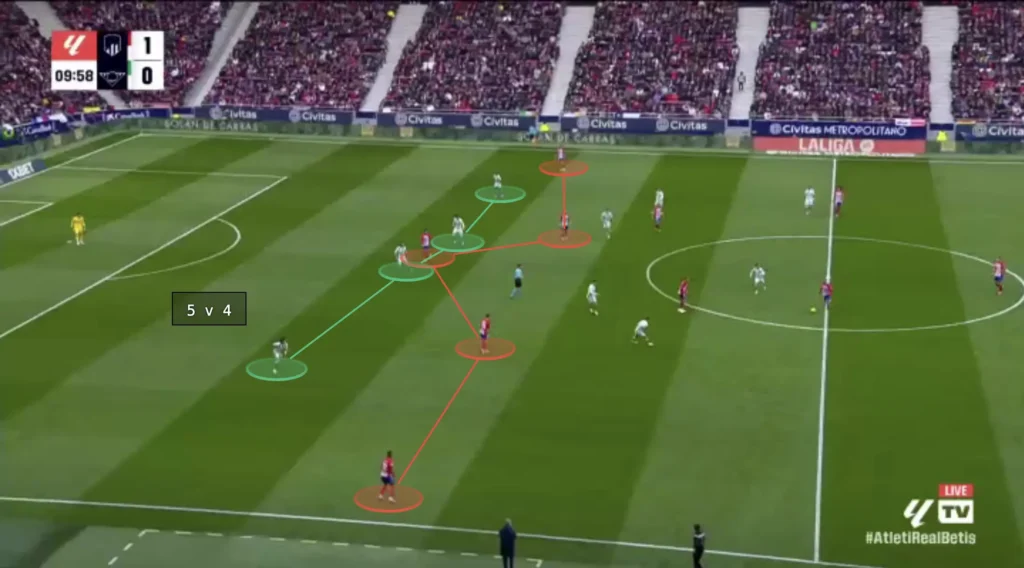
When the defending team is positioned on one side, the weak-side fullback becomes vulnerable to the long switch of play due to the 1v2 against Atletico Madrid’s winger and attacking midfielder. Diego Simeone’s team often capitalizes on this by getting the ball to the winger and creating many opportunities from 2v1 situations on the wing and in the half-spaces.
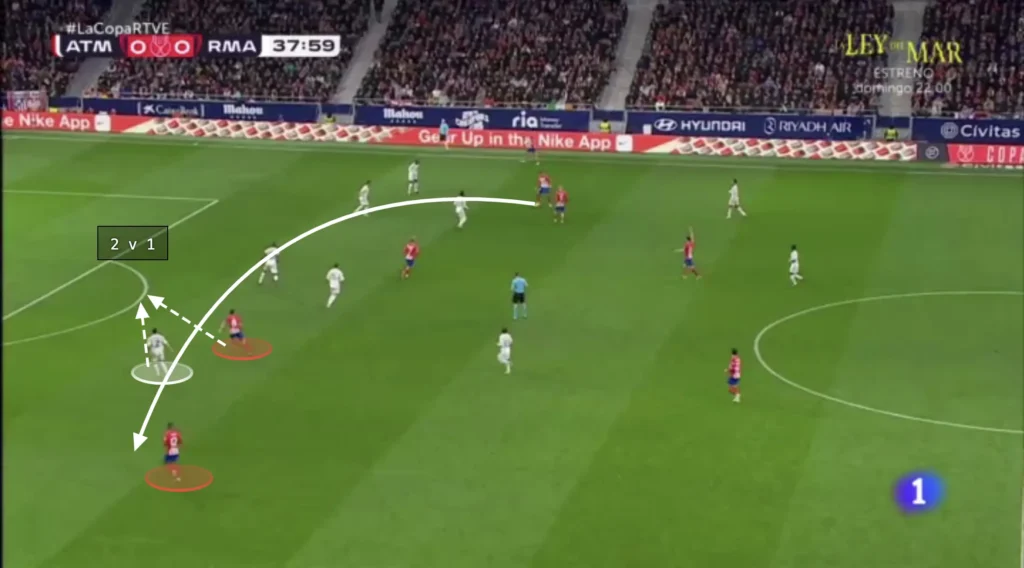
They also exploit this numerical superiority with a counter-movement between the winger and attacking midfielder. When a wide center-back has the ball, the attacking midfielder will make the run in behind while the winger drops to open a passing lane. This creates a question for the fullback. If he steps out on the winger, the space behind him opens up, allowing the center-back to play a through-ball to the attacking midfielder. However, if he stays inside to cover the run, the ball can be played to the winger, who can turn and attack the defense.
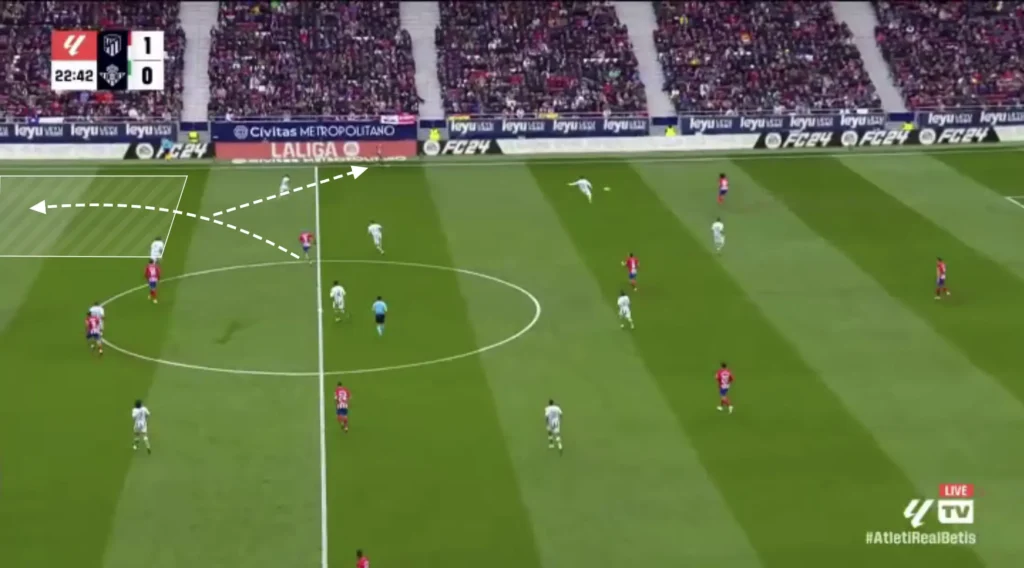
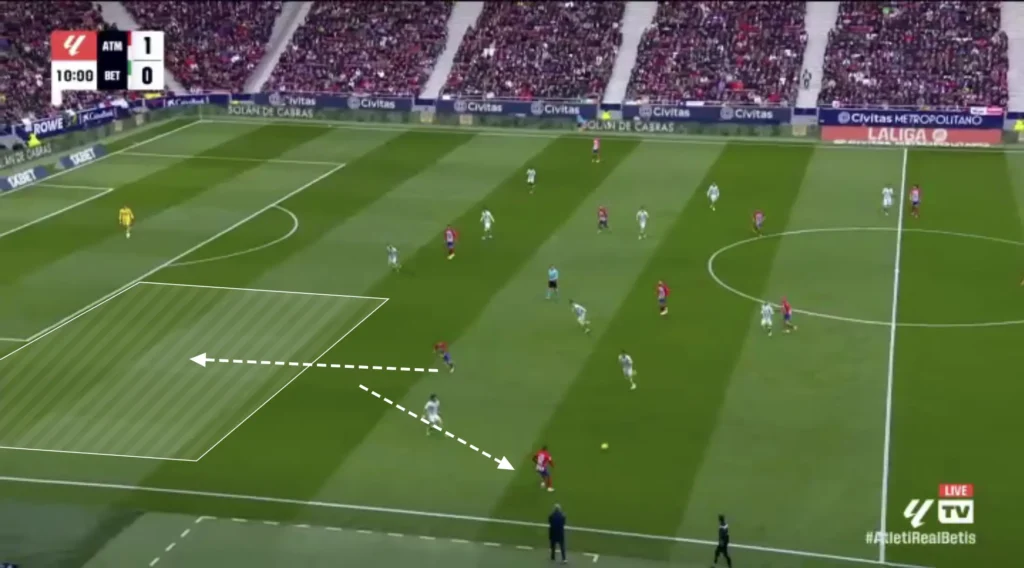
Final Third
Attacking the Half-Space
Atletico Madrid is an excellent team in the final third. They will always create many chances, mainly by attacking the space between the opposition center-back and fullback.
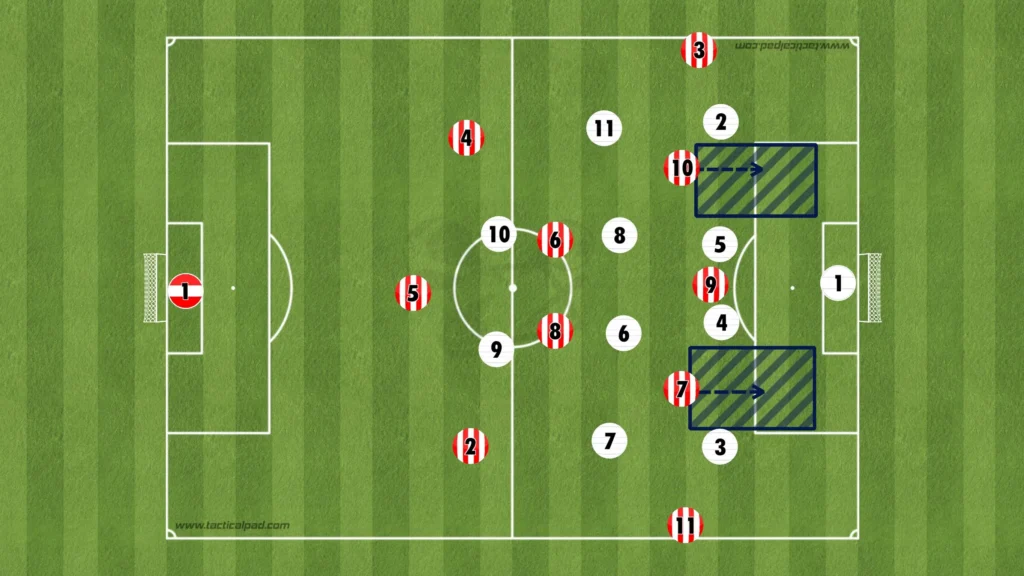
One way they do this is by using an underlap. Atletico Madrid will often find space for their wingers after switching play with a long ball. The winger will then attack his fullback, waiting for the underlapping run from an attacking midfielder.
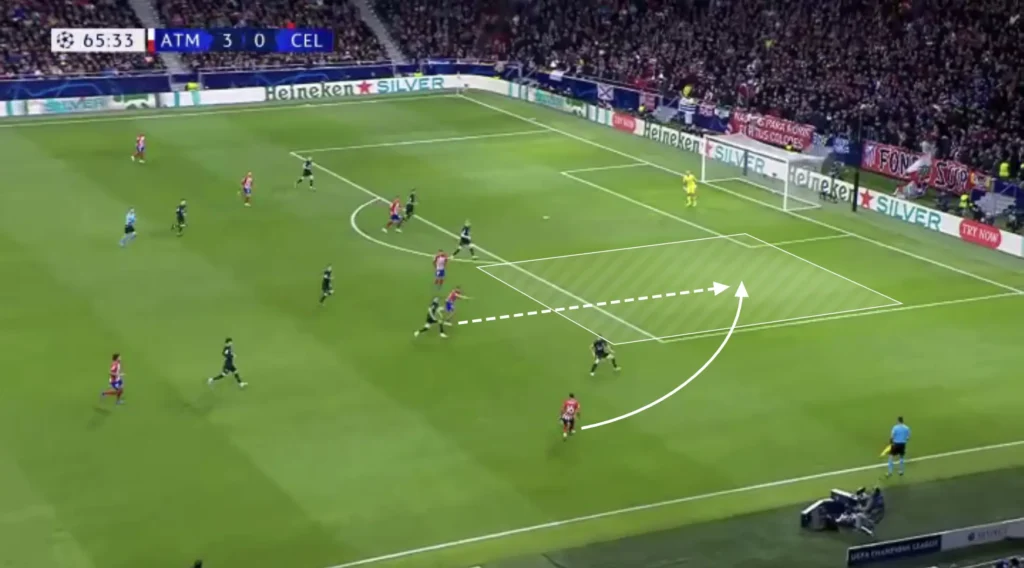
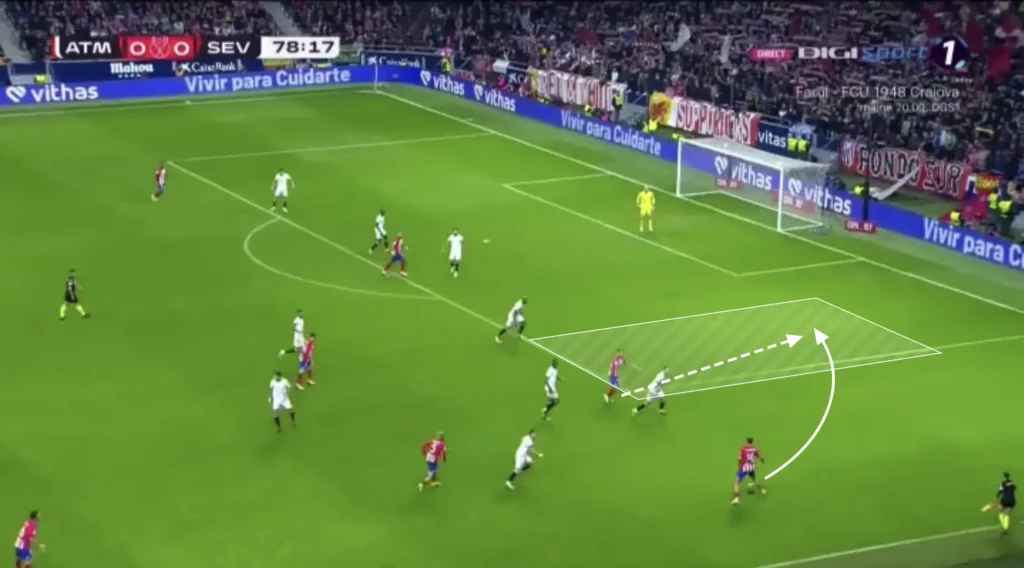
The opposition defending midfielder, who is responsible for the Atletico attacking midfielder, often struggles to track the run, which forces the center-back to make a decision. If he goes to track the run, he leaves a massive space in the box for the striker to exploit. Therefore, many center-backs will stay in the center, allowing the winger to play the ball into the open space to the free underlapping player.
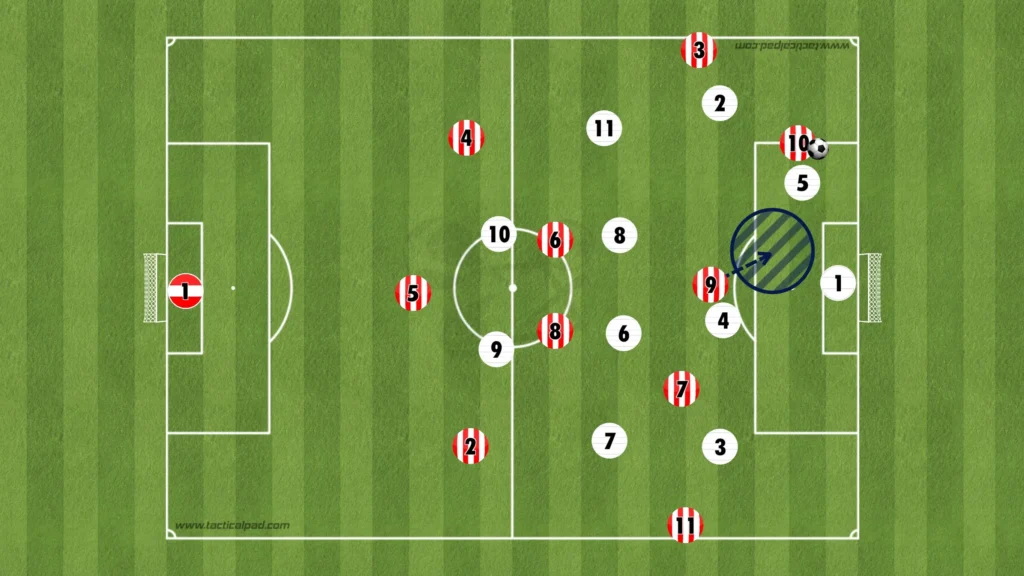
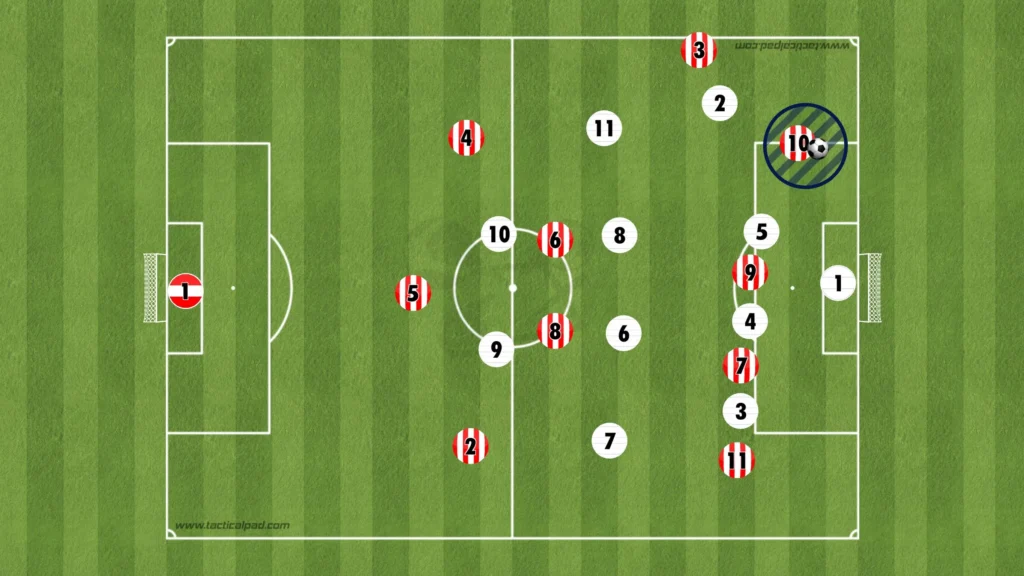
The winger, however, does not have to play the ball to the underlapping player. The underlapping player will often drag away a defensive midfielder, which opens the space inside. The winger can take the ball inside and shoot or find a pass to a free player in front of the backline.
Diego Simeone’s team also exploits the space between the center-back and the fullback by playing through-balls from the midfield or backline.
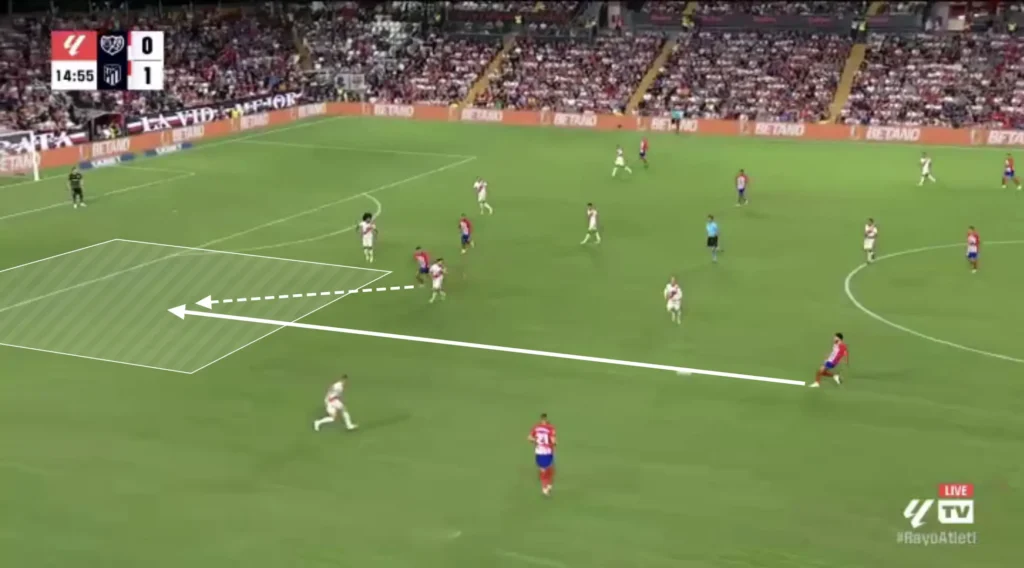
Many Players in the Box
The attacking midfielders and wingbacks always look to make runs into the box when the ball is in the final third, often getting four or five players into these areas to create overloads. The numerical advantages in the box force the defending team to make decisions and leave some players open.
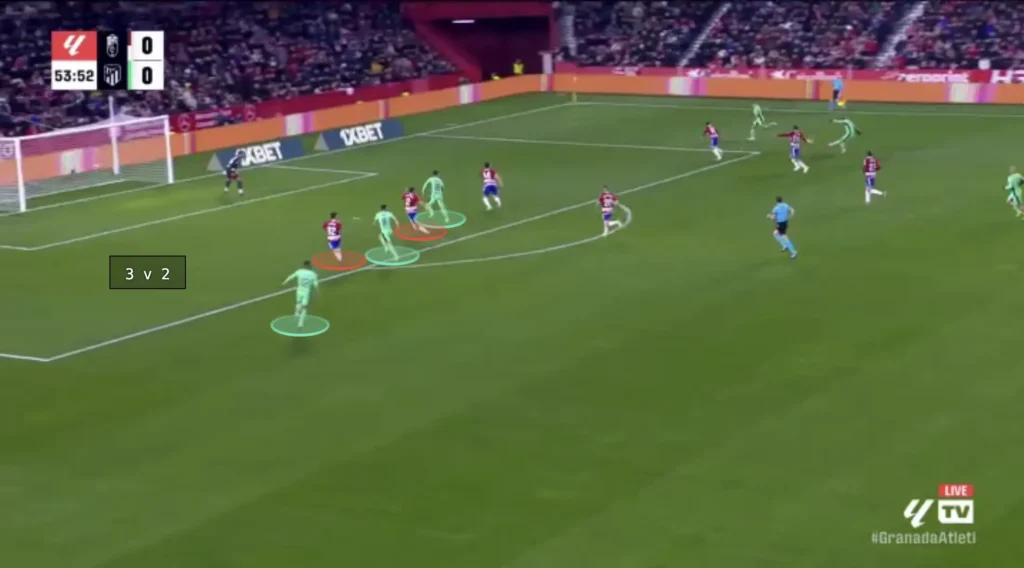
Atletico Madrid score many of their goals from crosses to the wingback at the back post. The opposition fullback will often be preoccupied with an Atletico attacking midfielder, which leaves massive space at the back post for the wingback to attack.
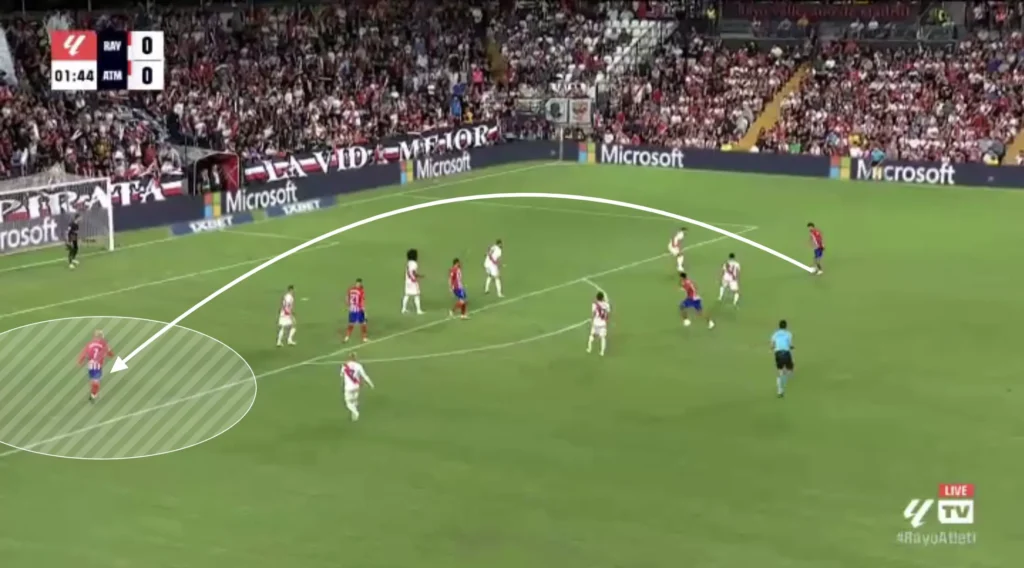
Diego Simeone also positions many Atletico players outside the box, ready for the second balls and cut-backs. They always succeed in pushing down the opposition’s defense, which opens the space in front of the backline. Atletico often finds their midfielders in these spaces, who can shoot or combine with an attacker to create goalscoring opportunities.
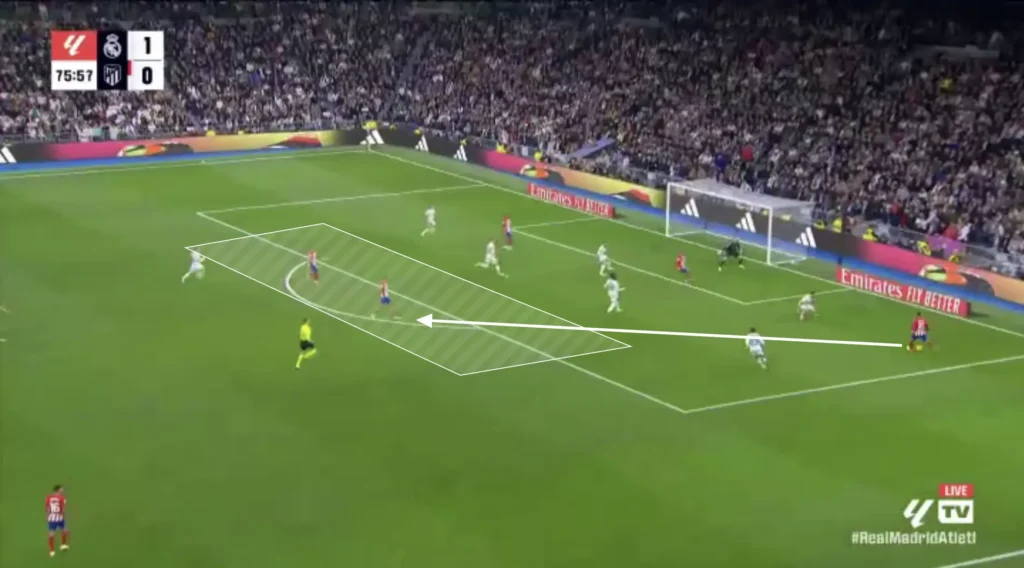
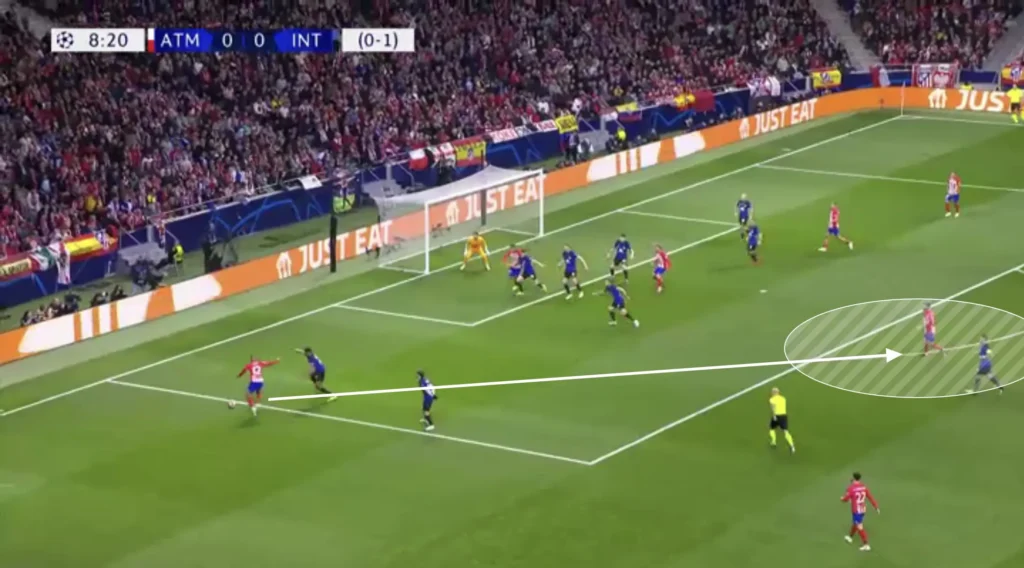
Defending
Diego Simeone’s Atletico Madrid is renowned for its unparalleled work rate when defending, epitomizing the Argentine manager’s emphasis on defensive solidity. Atletico’s players are unwavering in relentlessly pressuring opponents, often suffocating them in their own half. Simeone instills a collective defensive mindset that sees every player contribute to the team’s defensive efforts, from the forwards to the defenders. The midfield acts as a cohesive unit, relentlessly harrying opponents, closing down passing lanes, and disrupting their rhythm. This tireless defensive work ethic is complemented by disciplined positioning, ensuring that Atletico remains compact and difficult to break down. Simeone’s emphasis on defensive organization and tenacity has made Atletico Madrid one of the most formidable defensive units in world football, laying the foundation for their success on the pitch.
High Press
Diego Simeone places much value in being aggressive without the ball. This shows in Atletico’s high pressure. Simeone usually wants his team to go man-to-man and intensely press the opposition. They almost use their high press as an attacking threat, scoring many goals from winning the ball high up the pitch.
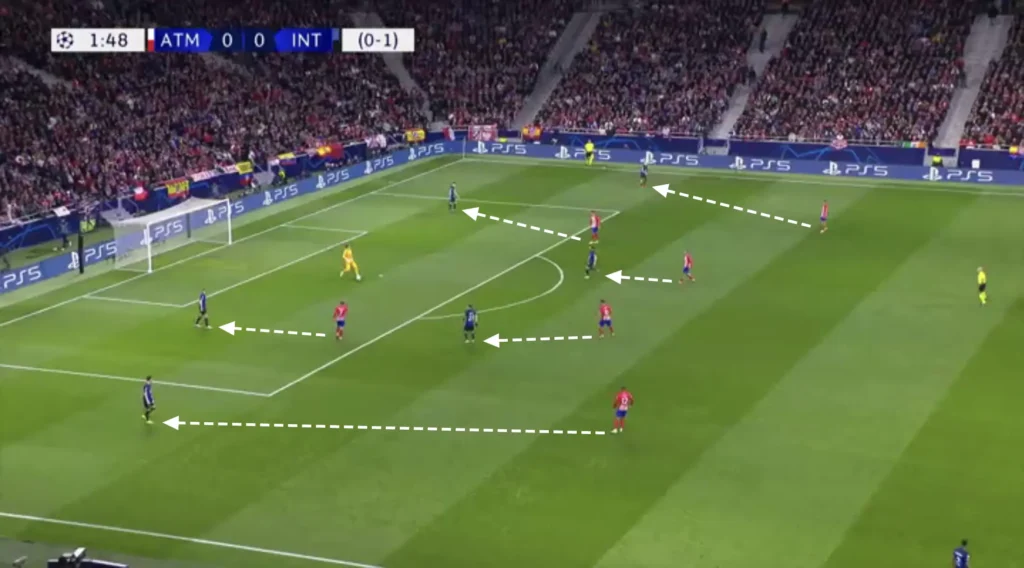
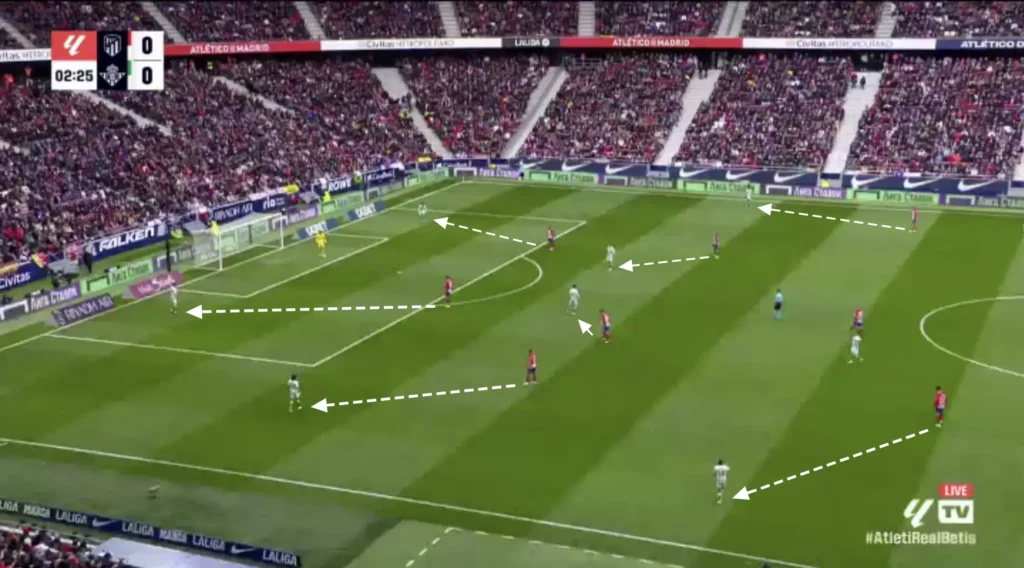
Low Press
In the low press, Simeone’s Atletico Madrid uses a 1-5-3-2 formation. They look to set up in a low-block, always trying to close the center, forcing the opposition out wide. To do this, Atletico Madrid are extremely compact in their defensive shape. The compact shape makes it almost impossible for teams to find spaces between the Atletico lines, making them difficult to break down.
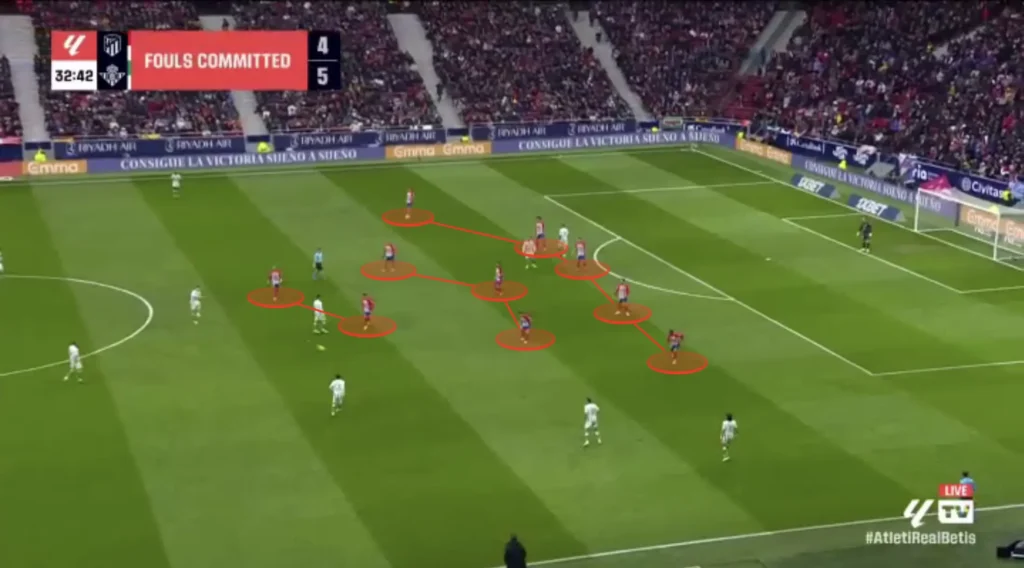
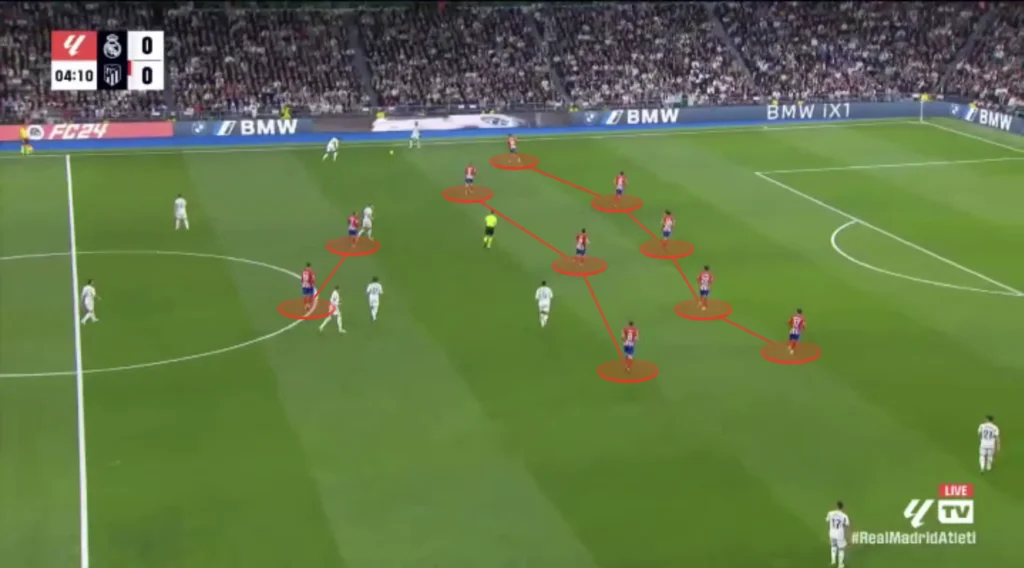
Atletico Madrid also uses the 1-5-4-1 formation in the low press sometimes.
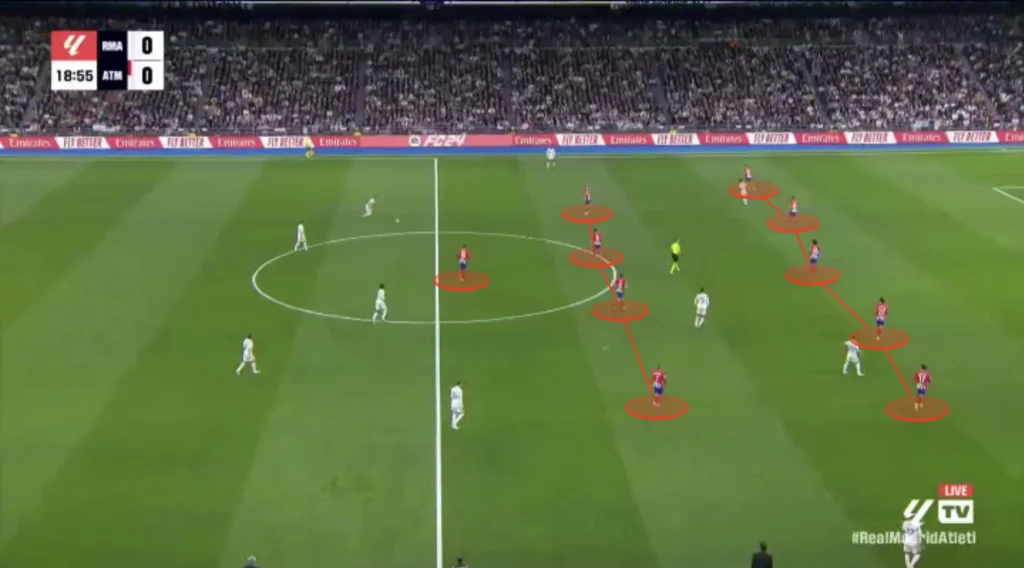
Squeezing the Pitch
Simeone’s Atletico also looks to squeeze the pitch when defending. This means constantly pushing the team up as much as possible when defending. Every time the opponent plays a slow, sideways pass or a back pass, Atletico’s first line of pressure pushes up, with the rest of the team following to stay compact. When the next pass comes, they push up even more, forcing the opponent back even more. They do this because it pushes the opponent further away from the Atletico goal, making it harder to create chances. Squeezing the pitch when possible is crucial for teams who do not necessarily look to always be in possession.
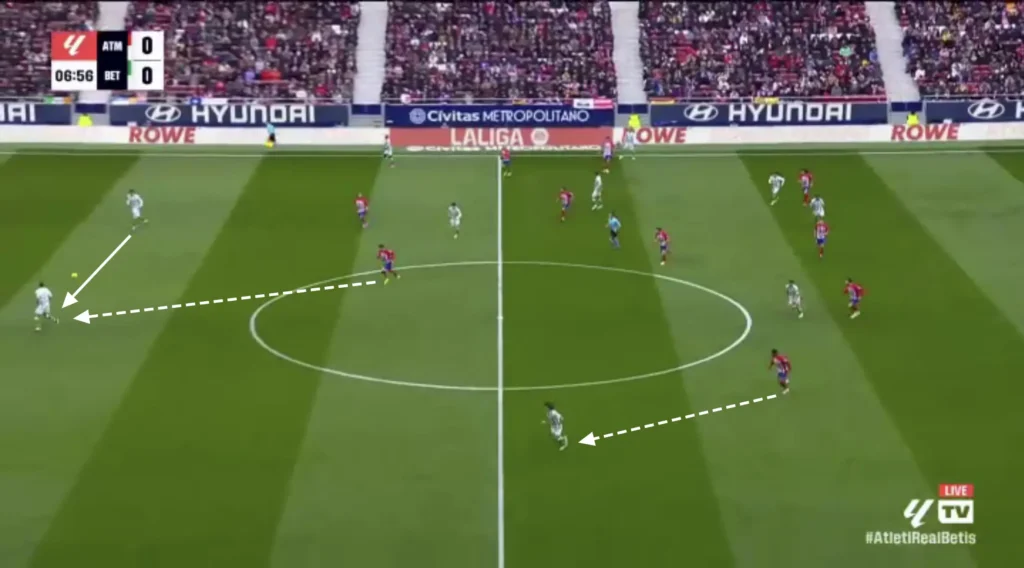
Transitions
Defensive Transitions
Positioning many players centrally, creating a numerical advantage in the midfield, creates good conditions in defensive transitions. Many players close to the ball after losing possession means that many players can work towards regaining possession. Therefore, Atletico Madrid often successfully regains possession directly after losing it.
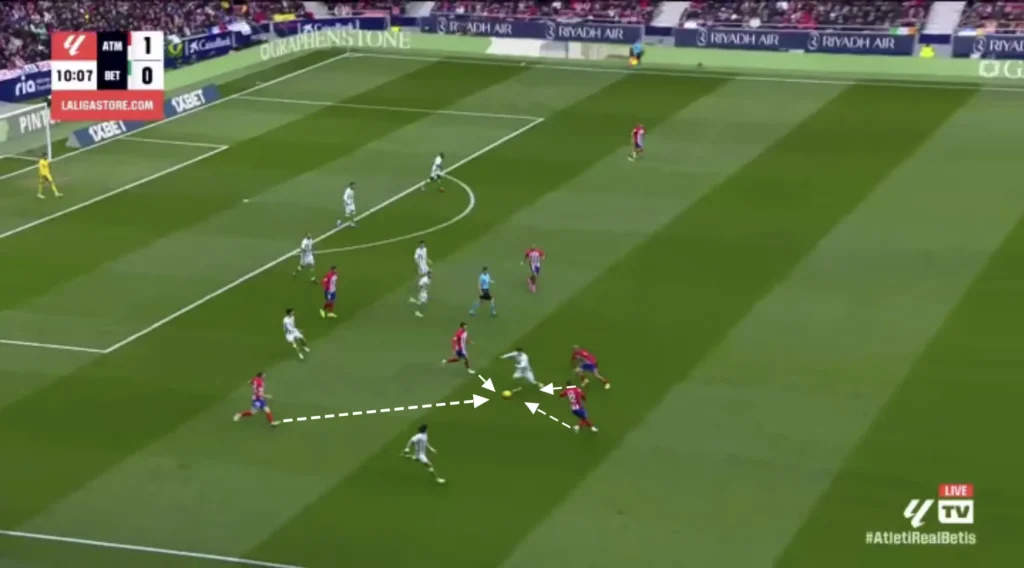
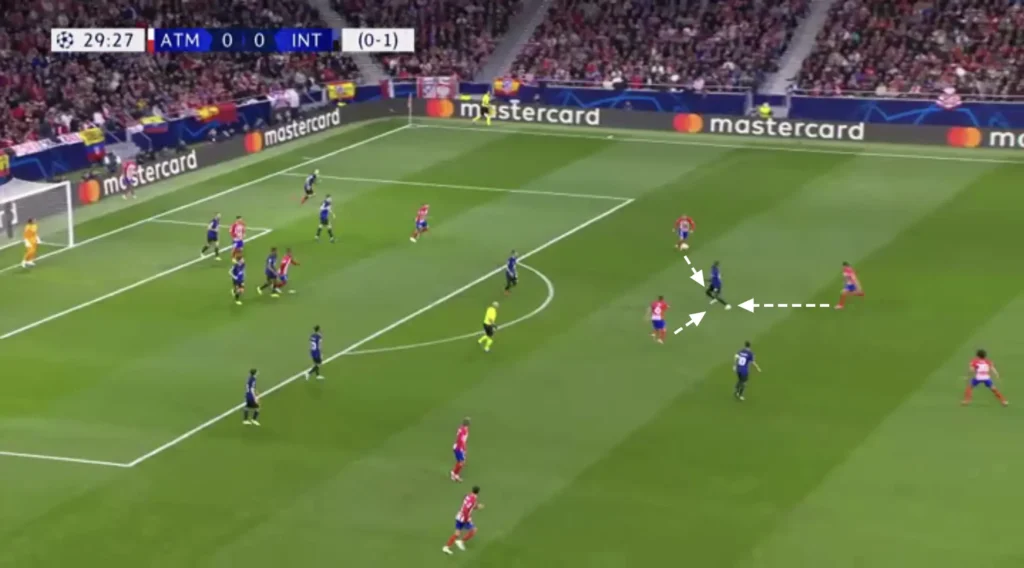
Offensive Transitions
Simeone also wants his team to counterattack in their offensive transitions. They do this with a high tempo, often attacking the spaces between the center-backs and fullbacks. In addition, keeping many players centrally while defending enables them to incorporate more players into the counterattacks.
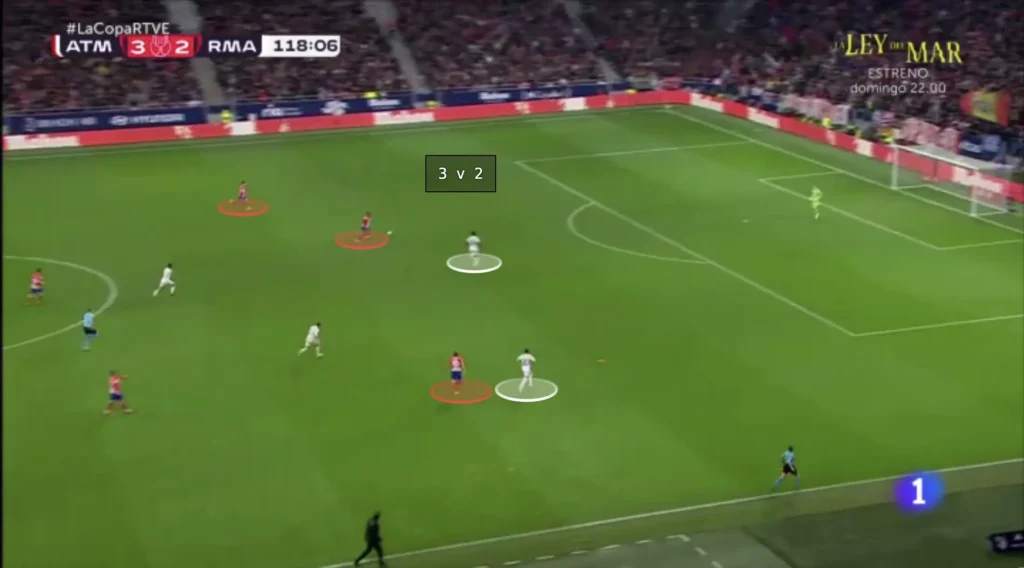
Final Thoughts
In conclusion, this tactical analysis offers a glimpse into the astute methods of Diego Simeone at Atletico Madrid. Simeone’s tactical influences have been the cornerstone of Atletico’s success, shaping them into a resilient and tactically disciplined unit. Through a combination of defensive solidity, effective pressing, and clinical counterattacks, Simeone has crafted a style of play that perfectly complements his squad’s strengths. This analysis highlights the meticulous attention to detail that defines Simeone’s approach, illustrating how his tactical prowess has consistently yielded positive results on the pitch. As Atletico Madrid continues to navigate the challenges of top-flight football, Diego Simeone’s tactical mastery will undoubtedly remain a defining aspect of their identity.

Very good analysis.
How good it would be to upload tactics for the FM according to your tactical development.
Thank you.